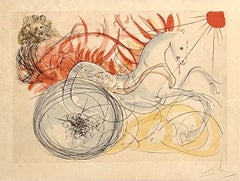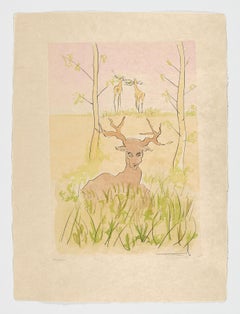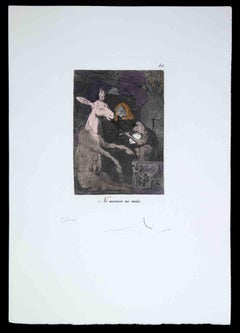Drypoint Animal Prints
1970s Surrealist Drypoint Animal Prints
Drypoint, Etching, Lithograph
1970s Abstract Expressionist Drypoint Animal Prints
Engraving, Drypoint, Etching, Aquatint
1970s Surrealist Drypoint Animal Prints
Drypoint, Paper, Aquatint
1970s Surrealist Drypoint Animal Prints
Paper, Drypoint, Etching
1970s Surrealist Drypoint Animal Prints
Drypoint, Paper, Aquatint
1970s Surrealist Drypoint Animal Prints
Drypoint, Paper, Aquatint
1970s Surrealist Drypoint Animal Prints
Drypoint, Paper, Aquatint
1970s Surrealist Drypoint Animal Prints
Drypoint, Paper, Aquatint
1970s Surrealist Drypoint Animal Prints
Drypoint, Paper, Aquatint
1970s Surrealist Drypoint Animal Prints
Drypoint, Paper, Aquatint
1970s Surrealist Drypoint Animal Prints
Drypoint, Aquatint, Paper
1970s Surrealist Drypoint Animal Prints
Drypoint, Paper, Aquatint
1970s Surrealist Drypoint Animal Prints
Drypoint, Aquatint, Paper
1970s Surrealist Drypoint Animal Prints
Drypoint, Aquatint
1970s Modern Drypoint Animal Prints
Paper, Ink, Drypoint
1970s Surrealist Drypoint Animal Prints
Color, Drypoint, Etching
1970s Surrealist Drypoint Animal Prints
Drypoint, Aquatint
1970s Surrealist Drypoint Animal Prints
Drypoint, Aquatint
1970s Surrealist Drypoint Animal Prints
Drypoint, Aquatint
1970s Contemporary Drypoint Animal Prints
Drypoint, Etching
1970s Surrealist Drypoint Animal Prints
Drypoint, Etching
1970s Contemporary Drypoint Animal Prints
Etching, Paper, Drypoint
1970s Modern Drypoint Animal Prints
Drypoint, Etching
1970s Modern Drypoint Animal Prints
Drypoint, Etching
1970s Contemporary Drypoint Animal Prints
Drypoint, Aquatint
2010s Contemporary Drypoint Animal Prints
Paper, Drypoint, Etching
Late 20th Century Abstract Drypoint Animal Prints
Lithograph
1960s Surrealist Drypoint Animal Prints
Etching
20th Century Other Art Style Drypoint Animal Prints
Engraving
1960s Surrealist Drypoint Animal Prints
Color, Engraving, Etching, Aquatint
20th Century Modern Drypoint Animal Prints
Drypoint, Aquatint
1930s Modern Drypoint Animal Prints
Drypoint, Aquatint, Etching
21st Century and Contemporary Contemporary Drypoint Animal Prints
Drypoint, Etching, Paper
1970s Surrealist Drypoint Animal Prints
Color, Drypoint, Etching
20th Century Modern Drypoint Animal Prints
Drypoint, Aquatint
1970s Surrealist Drypoint Animal Prints
Drypoint, Aquatint
1970s Surrealist Drypoint Animal Prints
Drypoint, Aquatint
1970s Surrealist Drypoint Animal Prints
Paper, Drypoint, Etching, Stencil
1970s Surrealist Drypoint Animal Prints
Etching, Drypoint
1970s Surrealist Drypoint Animal Prints
Drypoint, Etching
1970s Surrealist Drypoint Animal Prints
Etching, Stencil, Color, Drypoint
1970s Surrealist Drypoint Animal Prints
Drypoint, Aquatint
1970s Surrealist Drypoint Animal Prints
Drypoint, Aquatint
1970s Surrealist Drypoint Animal Prints
Drypoint, Aquatint
1970s Surrealist Drypoint Animal Prints
Drypoint, Etching, Stencil
1970s Surrealist Drypoint Animal Prints
Drypoint, Aquatint
1970s Surrealist Drypoint Animal Prints
Drypoint, Aquatint
1970s Surrealist Drypoint Animal Prints
Drypoint, Aquatint
1970s Surrealist Drypoint Animal Prints
Drypoint, Aquatint








